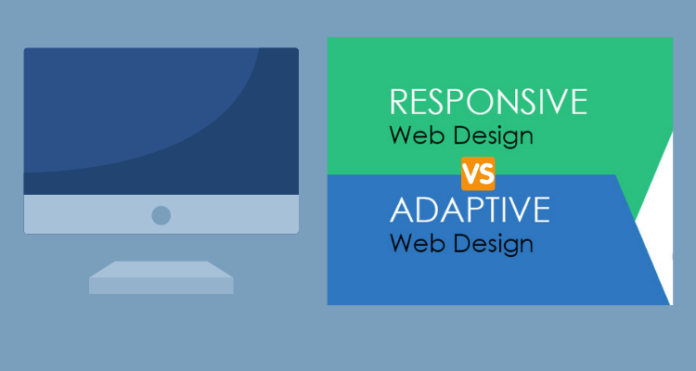Responsive design is increasingly becoming popular with each passing day. Developers and marketers these days opt for responsive designs to create websites and web pages. But what are responsive designs, and why is it gaining so much popularity? If you’re also looking for an answer to this question, you landed on the correct pages. Here in this article, we will elaborate more about responsive website design and adaptive web designs and help you identify which one is better for the long run.
What is responsive design?
Responsive design is the one that allows websites to open in any screen size that can be viewed on any device. It means that you can open the same site on various other devices, including smartphones, laptops, tablets, etc., without losing the resolution and screens format. And you will be happy to know that even Google loves responsive sites and helps them rank well on search engine pages. It is because businesses are trying to reach users on their smaller screens due to the increase in the number of smartphone users. To increase their reach and gain customers’ trust. The purpose of creating a responsive design is to make web pages display content on various devices smoothly that matches with the original website.
What is adaptive design?
An adaptive website is built with specific designs that are optimized for different screen dimensions. Instead of a responsive design, you can create a particular layout that is loaded when you download the website. The adaptive method uses a layer-on-layer structure instead of flexible adaptation. Creating a layout layer specific to a screen size provides increased control over the interactivity of the various sizes. The adaptive design follows the concept’ advanced optimizations’, which focuses on accessibility, i.e., optimization of essential functions and functionality in the website regardless of the browser and the size of the screen. Adaptive design loads a unique layout for our screen size, providing different versions of the website and its interactivity while maintaining user-friendliness.
Adaptive designs or responsive design layout?
Responsive design has its benefits. It is a cost-effective way to offer the same content for many different screen resolutions. So if you are going to make a responsive site, what should you think about it? First of all, it can be good to differentiate between different types of layouts. Many sites that are marketed today as responsive actually have an adaptive design.
The difference is as follows:
The adaptive layout has several predetermined widths. There is a jump between different screen resolutions when you change the window with a page with an adaptive design. Adaptive design is often combined with customizations for specific devices. You will have to fix the designs as per the device manually, and you’re bound to do experiments in adaptive layouts, whereas this is not the case with responsive website layouts.
Responsive layout has a floating design that changes the site step by step if you change the size of the window. You don’t need to fix every detail to make the site ready for various screen sizes. Responsive layouts are usually based on the smallest size in their content philosophy, called Mobile First. If you plan to design a site to target audiences using smartphones, then a responsive website layout is the best solution for you.
What is best: Responsive design or Adaptive designs
There is no other better method than the other, and other techniques allow the user to access your website regardless of the smaller screen size. What sets them apart is the technology behind the loading of the website.
What is right for your website should be based on your needs and how your customers or users load and use your website. Suppose you have a lot of mobile traffic. Say you have a service that 90% of your customers use, so you should have it easily accessible and give it a lot of space, which can be difficult in a responsive environment. In that case, you should perhaps consider focusing on a mobile version of your website where you can control the layout, user-friendliness, interactivity, and content to a greater extent. This is where adaptive design has advantages.
The responsive design is more or less a ‘one size fits all solution, and the layout works as a percentage, which means that the layout increases or decreases depending on the screen. The design shrinks on a smaller screen, which can mean that some interactivity and user-friendliness that is obvious on a desktop does not always come into its own on a smaller screen. The responsive structure works best on simple websites where you do not have specific services that need to be optimized. A responsive design will be the best solution for simple landing pages or sites that load beautifully on mobile devices. Their owners should consider creating an adaptive resource as an option for the future.
List of benefits of responsive designs over adaptive designs
- It helps increase the website’s fluidity to adapt various screen types, including laptops, desktops, mobile phones, tablets, etc.
- Increase website’s user experience
- Make the website crawlable on google to make ready for various other devices.
- Increased website ranking on search engine pages means more traffic on the website.
- Responsive layout saves extra time and money.
- Improve your website’s analytics and reporting
- Make your website stand out in the competition.
- Lower bounce rate and higher conversions
- Lower maintenance needs
- Increase customer’s trust and offer better services.
If you want to know more about responsive or adaptive design and how you can optimize your website in the best way. Do contact web design experts, and they will help you with better web design solutions.
The Bottom line
Many web professionals build websites that combine the best of responsive web design with the power of adaptive design. The characteristic of this is that there is no “one size fits all solution.” Both responsive web design and adaptive have their strengths and challenges, so you need to decide which will work best for your specific project or whether a hybrid solution suits you best.







